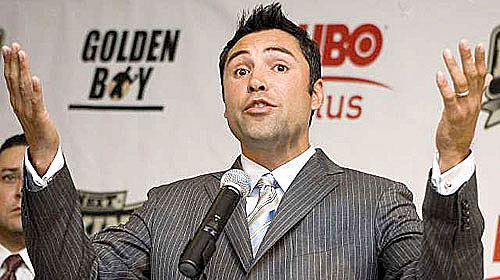I stand corrected
Originally Posted by MooMoo!  The flying V isnt a cutaway of the Explorer. Theres no way you could cut an explorer body to make a flying V body.
Though Im sure you know the difference in shape.
Exactly.
The flying V isnt a cutaway of the Explorer. Theres no way you could cut an explorer body to make a flying V body.
Though Im sure you know the difference in shape.
Exactly. 
 Thnx Moo I stand corrected the V came prior t the Explorer as per an article I found on Wikipedia
Thnx Moo I stand corrected the V came prior t the Explorer as per an article I found on Wikipedia  Gibson Flying V
From Wikipedia, the free encyclopedia
Gibson Flying V
From Wikipedia, the free encyclopedia
Jump to:
navigation,
search
Gibson Flying V ManufacturerGibsonPeriod1958
ManufacturerGibsonPeriod1958—
1959,
1967-present
ConstructionBody typeFlying V
Neck jointSet-inScale24.75"
WoodsBodyKorina,
MahoganyNeckMahoganyFretboardRosewood,
EbonyHardwareBridgeTune-o-maticPickup(s)H-
H: 496R (neck), 500T (bridge)
Colors availableClassic White, Cherry, Ebony, NaturalThe
Gibson Flying V is an
electric guitar model first released by
Gibson in 1958.
Contents
[
hide]
[edit] Origins
Gibson first manufactured prototypes of the guitar in
1957. Production guitars were made of korina wood, a trademarked name for
limba, a wood similar to but lighter in color than
mahogany. (Korina, originally spelled 'Korena', is the name that has been given to certain types of African Limba.) This Flying V, along with the Futura (
Explorer) and, initially, the
Moderne, made up a line of
modernist guitars designed by Gibson's then-president
Ted McCarty. These designs were meant to add a more
futuristic aspect to Gibson's image, but they didn't sell well. After the initial launch in 1958, the line was discontinued by
1959. Some instruments were assembled from leftover parts and shipped in
1963, with nickel- rather than gold-plated hardware.
They started out with a
mahogany guitar that was rounded in the back instead of being cut out. Gibson and Ted McCarty decided to change the back for weight reduction. The name supposedly has its origins in a comment that the guitar "looks like a flying letter V." Later they changed it to Korina for its then-fashionable blonde color.
Blues-rock guitarist
Lonnie Mack and
blues guitarist
Albert King started using the guitar almost immediately. Later, in the mid-late 1960s, such guitarists as
Dave Davies and
Jimi Hendrix, in search of a distinctive looking guitar with a powerful sound, also started using Flying Vs. The renewed interest created a demand for Gibson to reissue the model.
Gibson reissued the guitar in mahogany in
1967, updating its design with a bigger, more stylish pickguard, and ditching the original bridge, which had the strings inserted through the back, in favor of the stopbar tail piece more commonly associated with Gibson models. Some models were shipped with a short
Vibrola Maestro Tremolo. This 1967 model is now the standard for the Flying V or, as Gibson now calls it, "V Factor". Like other Gibson guitars the Flying V's headstock is angled at 17 degrees to tighten string tension to increase the amount of sustain.
Gibson has issued several limited-edition "signature" versions of the Flying V, including the
Jimi Hendrix model and the
Lonnie Mack model, the latter of which included a Bigsby tailpiece
tremolo arm identical to the unit Mack has continuously used on his own Flying V since 1958.
A fully functional, playable, highly enlarged replica of a Gibson Flying V, sizing over 43 feet (13 m), was built in June 2000 by Scott Rippetoe and his team from The Academy of Science and Technology (Texas). This world record is registered in
Guinness World Records














 Thnx Moo I stand corrected the V came prior t the Explorer as per an article I found on Wikipedia
Thnx Moo I stand corrected the V came prior t the Explorer as per an article I found on Wikipedia 
 ManufacturerGibsonPeriod1958—1959, 1967-presentConstructionBody typeFlying VNeck jointSet-inScale24.75"WoodsBodyKorina, MahoganyNeckMahoganyFretboardRosewood, EbonyHardwareBridgeTune-o-maticPickup(s)H-H: 496R (neck), 500T (bridge)Colors availableClassic White, Cherry, Ebony, NaturalThe Gibson Flying V is an electric guitar model first released by Gibson in 1958.
ManufacturerGibsonPeriod1958—1959, 1967-presentConstructionBody typeFlying VNeck jointSet-inScale24.75"WoodsBodyKorina, MahoganyNeckMahoganyFretboardRosewood, EbonyHardwareBridgeTune-o-maticPickup(s)H-H: 496R (neck), 500T (bridge)Colors availableClassic White, Cherry, Ebony, NaturalThe Gibson Flying V is an electric guitar model first released by Gibson in 1958. Fun while it lasted tho wasn't it?!
Fun while it lasted tho wasn't it?!